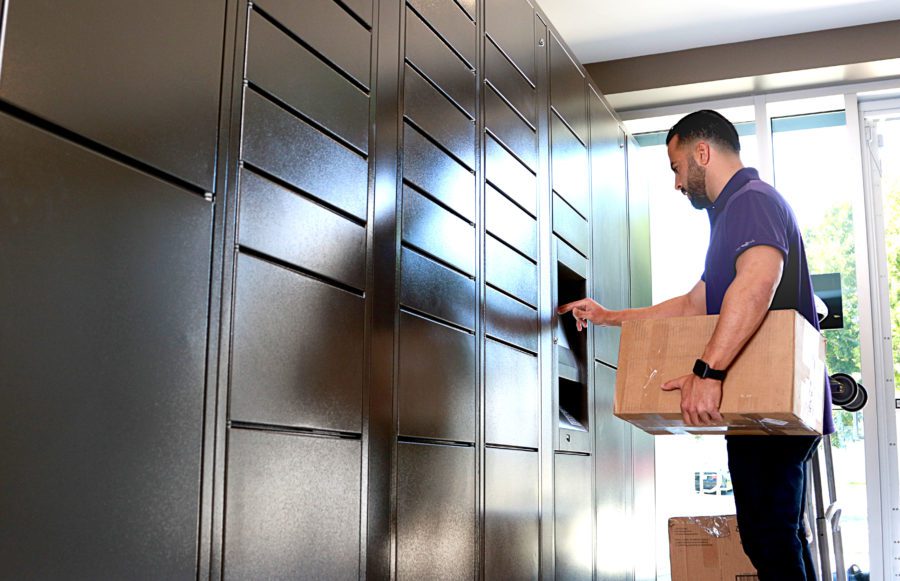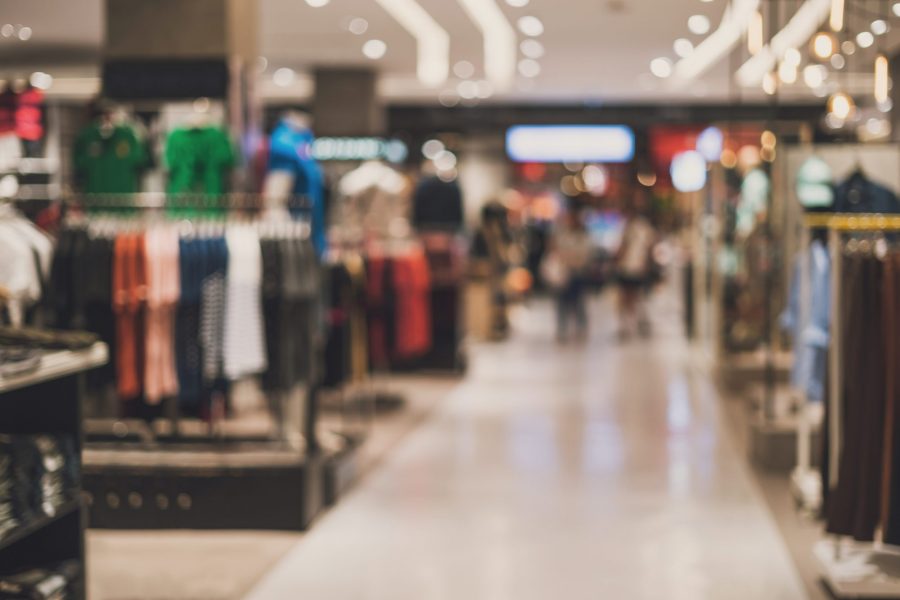
Retail
Streamlining Retail Returns With An Open Locker Network
Written by: Parcel Pending
5 Min Read
Published: November 20, 2022
Updated: October 10, 2024
The value of goods moved by customers back to sellers and manufacturers in the retail industry is estimated to reach a value of $954 billion by 2029.1 The increasing value of the segment also means that the returns process is becoming a significant component of competitive differentiation for consumers and an important driver in a customer‘s shopping decisions. Simply put, a customer is more likely to shop with an online retailer if they know that the returns process will be quick, seamless, and easy – either using a courier service, in person at a retail store or return location, or with the support of smart locker technology.
Smart lockers can be a customer– and budget-friendly solution for retailers to address the mounting pressures and costs for seamless returns. The reverse logistics market is growing and is expected to continue to grow, particularly with the increased adoption of smartphones and online shopping. As people buy more online, they also return more of those goods to retailers for a refund or exchange.
The True Cost of Returns
Along with the exponential growth of returns, so are the costs that retailers incur to deal with them. In 2021 alone, the total return rate for unwanted items rose to 16.6% from the previous year’s rate of 10.6%, and for online sales, this number now reaches close to 30%.2 According to Appriss Retail and the National Retail Federation, for US retailers alone, the cost of returns accounted for $761 billion in lost sales.3 Recent research also indicates that returns add an additional 2.5 million tons of product, particularly clothing, to landfills yearly!4
Increasingly, the quality of the returns experience is a key factor in improving customer loyalty and satisfaction and an indicator of a strong retail customer experience. Statistics indicate that 92% of consumers will buy from a retailer again if the customer returns process is easy, and 67% of shoppers check the details about making returns before following through with their purchase.5 Given this shifting reality, retailers must balance initiatives that reduce costs, and prevent fraudulent returns and return fraud with services that satisfy customers.
Leveraging Technology to Streamline the Return Process
As the ease of making returns increasingly becomes a point of competitive differentiation, retailers and logistics providers must find innovative return solutions to address the returns problem. By 2028, the reverse logistics market is expected to increase by 28%, therefore many retailers are looking into return initiatives that decrease bracketing (when customers purchase multiple variations of a product with the intention of returning the ones that they don’t like or that don’t fit).6 They are also adopting innovative return policy initiatives such as partial refunds, store credit, flexible exchange policies, or returns at a nominal cost to consumers
Returns to store are the lowest cost option for retailers – and returns with smart lockers can provide an easy, self-service way to facilitate this process that also increases in-store foot traffic. While many are familiar with smart lockers – such as Parcel Pending’s Buy Online, Pick-Up in Locker (BOPIL®) solutions – for in-store order pick-up, lockers can also be used for retail returns. With smart click and collect lockers, retailers can allocate a set number of doors for returns, allowing stores to balance capacity between pick-ups and returns as needed.
As Gary Winter, VP for Global Strategic Initiatives at Parcel Pending by Quadient points out, “we are making huge efforts to try to ease the challenge of returns for retailers. Not only has it become a significant point of competitive differentiation, but it’s also something that more and more retailers seem to be leaning into as a way to drive conversion. If customers don’t like an item, they feel free to simply return it. Smart lockers save money for retailers and make life easier for customers.”
How Returns Work with Smart Lockers
For retailers, using smart contactless lockers to facilitate returns is an easy and straightforward process for their customers. Here are the easy steps that a customer passes through to complete the process – from return initiation to return completion:
- The customer selects the option online to return their item (or items) to a locker at one of your stores.
- The customer receives a personalized QR code via email.
- The customer makes their way to a convenient locker location and scans the return QR code.
- A locker door opens automatically, and the customer places their item inside.
- Once the item is inside the locker and the door is closed, the customer receives a confirmation receipt by email for the returned item.
- A retail employee or carrier agent can then retrieve the returned item.
- The customer can complete the entire returns process in less than 30 seconds.
Streamlining Returns with Parcel Pending by Quadient’s Open Locker Network
While many retailers opt to have a private locker network dedicated to the pick-up and return of their merchandise only, this option may not be budget-friendly for every retailer. Other options are available. For instance, retailers can reduce upfront cost by sharing a locker network with other retailers (and even other local businesses) to facilitate order pick-ups and returns through an open locker network.
Parcel Pending’s Open Locker Network allows retailers to manage returns in a way that both lowers operational costs and serves consumers’ expectations for their retail experience with greater ease and less friction. Our flexible investment models, such as shared and hybrid locker networks, limit upfront costs and can even provide revenue-sharing opportunities – with many businesses realizing ROI within two years.*
Ready to fulfill MORE for your customers by joining our open locker network? Fill out the form below to speak to a Parcel Pending by Quadient representative today.
*Based on client results, your results may vary
Sources:
- Data Bridge Market Research. Reverse Logistics Market to Reach USD 954,500.37 Mn by 2029 with Key Players: FedEx, Optoro, Schenker, ReverseLogix. einews.com. June 16, 2022. https://www.einnews.com/pr_news/577094243/reverse-logistics-market-to-reach-usd-954-500-37-mn-by-2029-with-key-players-fedex-optoro-schenker-reverselogix
- Saleh, Khalid. E-commerce Product Return Rate – Statistics and Trends [Infographic]. www.invespcro.com. May 16, 2022. https://www.invespcro.com/blog/ecommerce-product-return-rate-statistics/
- National Retail Federation and Appriss Retail. Consumer Returns in the Retail Industry 2021. nrf.com. January 25, 2022. https://nrf.com/research/customer-returns-retail-industry-2021
- Constable, Harriet. Your brand new returns end up in landfill. www.bbcearth.com. https://www.bbcearth.com/news/your-brand-new-returns-end-up-in-landfill
- Saleh, Khalid. E-commerce Product Return Rate – Statistics and Trends [Infographic]. www.invespcro.com. May 16, 2022. https://www.invespcro.com/blog/ecommerce-product-return-rate-statistics/
- Data Bridge Market Research. Reverse Logistics Market to Reach USD 954,500.37 Mn by 2029 with Key Players: FedEx, Optoro, Schenker, ReverseLogix. einews.com. June 16, 2022. https://www.einnews.com/pr_news/577094243/reverse-logistics-market-to-reach-usd-954-500-37-mn-by-2029-with-key-players-fedex-optoro-schenker-reverselogix



